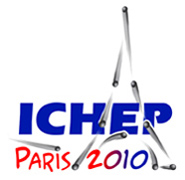Speaker
Dr
Pedro Jimenez-Delgado
(University of Zürich)
Description
Utilizing recent DIS measurements (σ_r, F_{2,3,L}) and data on hadronic dilepton production we determine at NNLO (3-loop) of QCD the dynamical parton distributions of the nucleon generated radiatively from valence-like positive input distributions at an optimally chosen low resolution scale (Q_0^2 < 1 GeV^2) by employing the ``fixed flavor number factorization scheme'' (FFNS). These are compared with ``standard'' NNLO distributions at some fixed and higher resolution scale (Q_0^2 > 1 GeV^2). The NNLO corrections imply in both approaches an improved value of χ^2, typically χ^2_NNLO~ 0.9χ^2_NLO. The dynamical NNLO uncertainties are somewhat smaller than the NLO ones and both are, as expected, smaller than those of their ``standard'' counterparts. The dynamical predictions for F_L(x,Q^2) become perturbatively stable already at Q^2 = 2 - 3 GeV^2 where precision measurements could even delineate NNLO effects in the very small-x region. We obtain α_s(M_Z^2) = 0.1124 ± 0.0020 to be compared with 0.1145 ± 0.0018 at NLO.
Using these NNLO dynamical parton distributions in the FFNS as input, we generate radiatively parton distributions in the ``variable flavor number factorization scheme'' (VFNS) as well, where also the heavy quark flavors (c,b,t) become massless partons within the nucleon. Only within the VFNS are NNLO calculations feasible at present, since the required partonic subprocesses are available only in the approximation of massless initial-state partons. The NNLO predictions for gauge boson production are typically larger (by more than 1σ) than the NLO ones, and rates at LHC energies can be predicted with an accuracy of about 5%, whereas at Tevatron they are more than 2σ above the NLO ones. The NNLO predictions for SM Higgs boson production via the dominant gluon fusion process have a total (pdf and scale) uncertainty of about 10% at LHC which almost doubles at the lower Tevatron energies; these predictions are typically about 20% larger than the ones at NLO but the total uncertainty bands overlap.
Primary author
Dr
Pedro Jimenez-Delgado
(University of Zürich)
Co-author
Prof.
Ewald Reya
(TU Dortmund)




